The field of biological science is often marked with the recognition of various biomolecules which drives the crucial living process. Knowing about these biomolecules is paramount to decode the hidden question of biological processes. Gel electrophoresis has marked a symbolic path for the scientist working towards such goals. Let’s understand how this small device has set itself an indispensable tool in the field of biological sciences.
The basics of Gel Electrophoresis
“Electrophoresis” is an Anglo-Greek word, where “Electro” stands for electric field and “Phoresis” refers to movement. Thus, Gel Electrophoresis is a method where the biomolecules are separated under the influence of the electric field.
Gel electrophoresis is used for separation of charged molecules such as nucleic acids (DNA, RNA) and proteins. Let’s understand the basic principle that how biomolecules can be separated using gel electrophoresis.
The Working Principle
Gel electrophoresis works on the principle of Electromagnetism i.e. separating biomolecules on the basis of their “Size” and “Charge” under the influence of the electric field. If you notice, the gel electrophoresis technique mainly consists of Gel – Agarose or Polyacrylamide, Buffer, Electrical field, Stain, Ethidium Bromide. The biomolecules loaded on the gel are given a uniform charge which later moves towards the positive or negative electrode depending on their charge under the influence electric field. Unlike proteins which might have a net positive or net negative charge, nucleic acids mainly have negative charge imparted due to the presence of phosphate backbone. Thus migrates towards the positive electrode i.e. anode. Later the separated molecules are viewed via staining or under UV.
Types of Gel Electrophoresis
The gel electrophoresis can be categorized into mainly two categories –
- Agarose Gel Electrophoresis (AGE)
- PolyAcrylamide Gel Electrophoresis (PAGE)
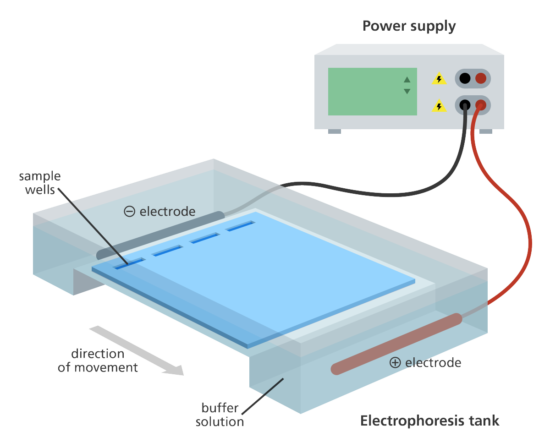
Agarose Gel Electrophoresis (AGE)
Here agarose is used as a matrix to separate the molecules of different sizes. Normally 0.5% agarose is used however varied concentration can be used for separation of different size of molecules. In AGE, there is a Tank Buffer – Tris EDTA which allows movement of ions carrying current and also to maintain the pH thus, providing a stable condition for biomolecules. AGE is mainly used for separation of DNA molecules since they carry negative charge due to the presence of phosphate group. The DNA molecules migrate towards the anode under the influence of the electric field. The concentration of agarose allows for separation of DNA on the basis of its size. Thus the more negative and smaller DNA moves the farthest whereas the larger super-coiled and less negatively charges migrate the least. The Gel containing Ethidium Bromide helps in observing separated DNA bands under the UV transilluminator.
Polyacrylamide Gel Electrophoresis
It is mainly used for separation of proteins. Here polyacrylamide is used as the gel matrix for separation, it is formed via polymerization reaction between acrylamide and N, N’ methylene-bis-acrylamide (it acts as a cross-linking agent). The initiation of rapid polymerization starts as soon as the TEMED (Tetramethylethylene Diamine) is added. TEMED aids the overall introduction of free radicals from the persulphate ions. The gels mainly consist of two sections between the glass plate – Stacking gel and resolving gel exposed to buffer at different pH.
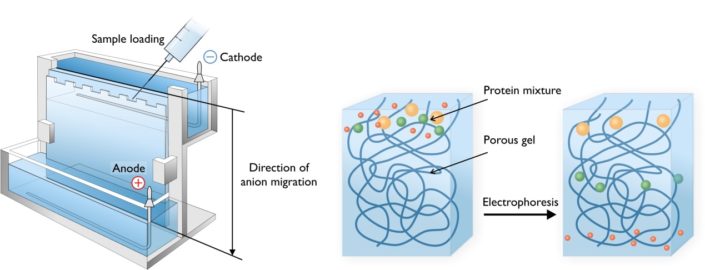
The stacking gel is maintained at low pH (6.8), here the protein bands get stacked at the bottom. This gel contains glycine ions in the zwitterionic form which migrates very slowly. The chlorine ions having a high charge/mass ratio moves the fastest. Thus under the influence of the electric field, the Cl– ions lead with protein molecules following it and stacking them at resolving gel.
As soon as glycine ions reach the resolving gel they acquire a net negative charge and thus move faster due to high charge/mass ratio followed by protein and then Cl– ions. Since proteins are the carrier of the current they separate according to their molecular mass via sieving effect of the gel.
PAGE can be classified under two further types –
-
SDS –PAGE
Here Sodium dodecyl sulfate (SDS) is used as the denaturing agent. This denatures the protein and imparts a uniform net negative charge to them. Thus, during separation, the proteins migrate towards anode under the influence of electric field and separate via molecular sieving effect on the basis of their individual sizes.
-
Native PAGE
Here the separation of protein is carried out under the absence of SDS. The proteins are not denatured; instead, they are separated under native conditions. In SDS PAGE the separation is carried on basis of molecular mass whereas in Native PAGE the separation is carried out on the basis of proteins charge and hydrodynamic size.
Stepping ahead for technological advancements
Earlier the separation of biomolecules like DNA, RNA, and proteins was done using the centrifugal method where the separation occurs under the influence of centrifugal force. However, this method was quite tedious, time-consuming and not efficient. This led to cascading technological advancements for the development of gel electrophoresis. The 1960s marks the successful separation of biomolecules using agar, however, at later stages, the modification and development were carried out to improve the efficiency and this led to the use of Agarose and Polyacrylamide gel for the electrophoresis. Previously the staining methods used radioactive labelling which was harmful later they got replaced with stains such as ethidium bromide.
Applications beyond limits
The invention of gel electrophoresis has been vital for many fields as its application exists in a wide variety of areas. It is more often used with PCR – polymerase chain reaction to analyze the separated bands; also can be used in mass spectrometry; Restriction fragment length polymorphism (RFLP), DNA fingerprinting, Genomic library creation, electroblotting techniques for characterizations, Identification of species, preparation of antigens, measuring the genetic diversity across species, Molecular marker identification etc.
Inventions of gel electrophoresis have helped mankind to observe things at the molecular level i.e. at DNA, RNA & Protein level, which otherwise is impossible for naked eyes. It allows us to mine deep inside the biological living being to understand the intricate processes within them.
References:
- Joseph Sambrook; David Russell. “Chapter 5, protocol 1”. Molecular Cloning – A Laboratory Manual. 1(3rd ed.). p. 5.2–5.3.
- Kryndushkin DS, Alexandrov IM, Ter-Avanesyan MD, Kushnirov VV (2003). “Yeast [PSI+] prion aggregates are formed by small Sup35 polymers fragmented by Hsp104”. Journal of Biological Chemistry. 278(49): 49636–43.
- Agarose gel electrophoresis (basic method). Biological Protocols. Retrieved 23 August2011.
- http://www.biologydiscussion.com/acids/nucleic-acid/types-of-gel-electrophoresis-nucleic-acids/71875
- Lodish H; Berk A; Matsudaira P (2004). Molecular Cell Biology(5th ed.). WH Freeman: New York, NY.
- Brody JR, Kern SE (October 2004). “History and principles of conductive media for standard DNA electrophoresis”(PDF). Biochem. 333 (1): 1–13.
- https://www.mblbio.com/bio/g/support/method/sds-page.html



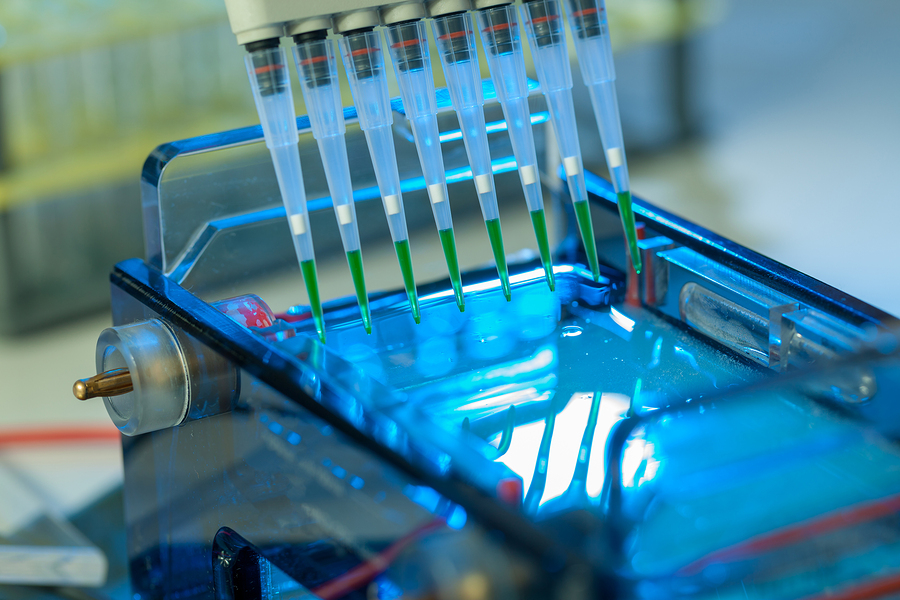
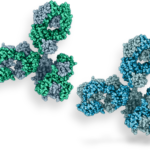

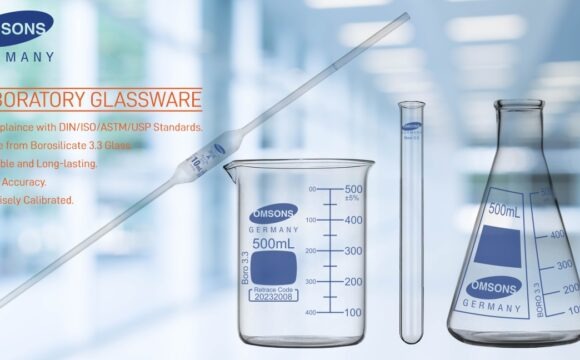
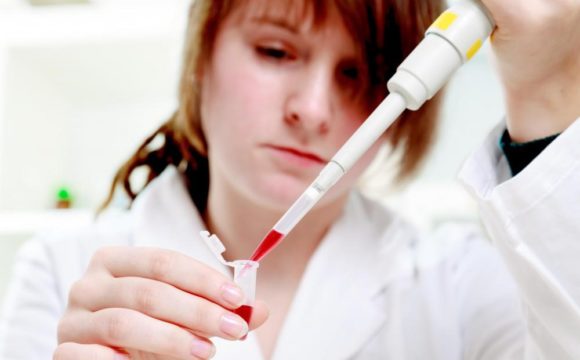
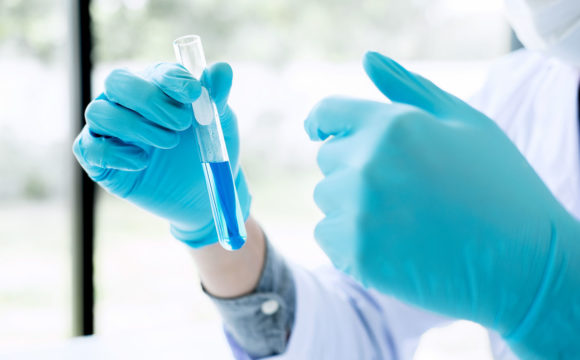
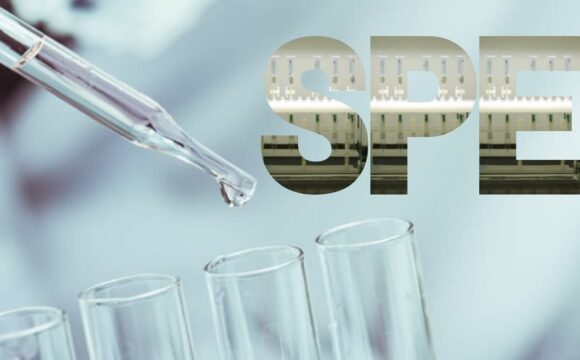
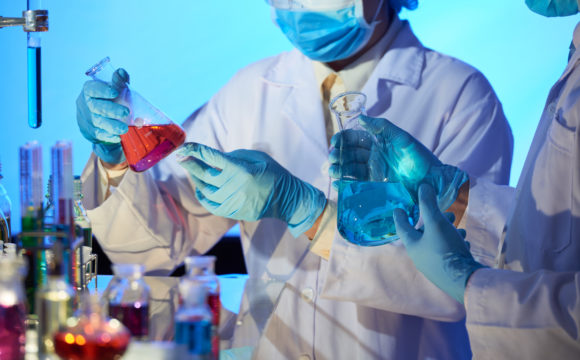
Greetings!!!
We are glad to have your gracious presence at the “11th International Conference on Separation Techniques (Separation Techniques 2019), October 18-19, 2019,
which is going to be held in Milan, Italy
The theme of the conference is “ESSENTIAL INNOVATION IN SEPARATION TECHNIQUES”.
Please add details of your conference here: https://blog.biomall.in/list-your-science-event/ so that we can list it on our blog.
Hey! It’s a great blog about the gel electrophoresis! Hope to get more information from here again in future!
We shall continue to make our articles better and informative! Thanks!